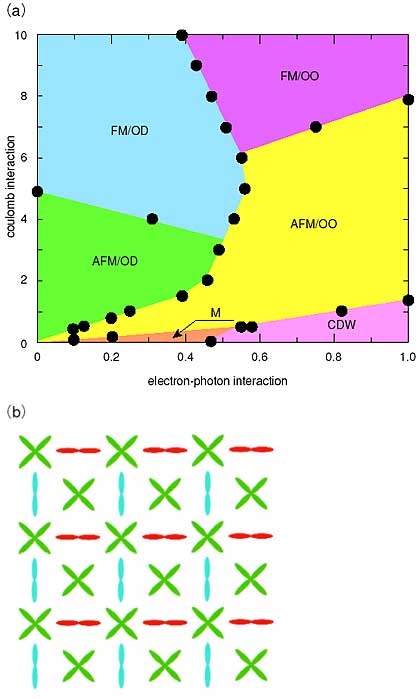In general, electrical resistivity in materials is increased when a magnetic
field is applied, since the direction of electron motion is curved by the Lorentz
force. However, negative magneto-resistive phenomena can sometimes be observed.
In this case, resistivity is decreased by applying a magnetic field. In the manganites
in particular, a magnetic field of a few Tesla can drastically suppress resistivity
by several orders of magnitude, leading to "colossal" magneto-resistive
(CMR) phenomena. From the industrial viewpoint, one may envision applications
of CMR manganites to high-density magnetic recording.
Regarding CMR phenomena, much intensive investigation has been done, but recently it has been recognized that it is important to control three degrees of freedom of the electrons: charge, spin, and orbital. In particular, much attention has been focused on orbital ordering (OO) phenomena, i.e., localization of electrons occupying different orbitals in space. The OO state has been discussed extensively for magnanites with two orbitals, but recently, even in ruthenates with three orbitals (xy, yz, zx), the possibility of OO has been theoretically predicted and found in the antiferromagnetic (AFM) phase as shown in yellow in Fig. 4-6(a). The corresponding OO exhibits a beautiful geometric pattern composed of three orbitals, as shown in Fig. 4-6(b).
The concept of OO provides us with an answer to the naive question as to why negative magneto-resistance becomes so gigantic. For instance, in phase diagram (a), an insulating AFM/OO state exists adjacent to a metallic ferromagnetic (FM) orbitally disordered phase. At the phase boundary, even a small magnetic field can produce a transition from the AFM to FM phases, accompanied by an insulator-metal transition. This is the ultimate CMR phenomenon, supported by hidden OO. |
